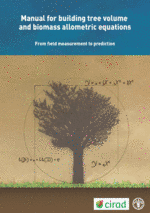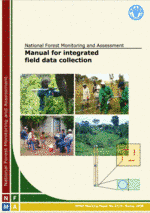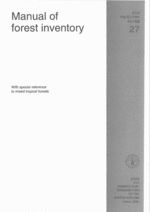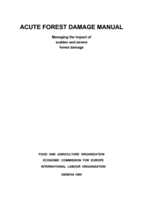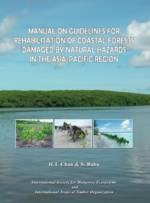Tools
A tool is a resource that supports and guides the implementation of SFM. This section includes all the tools available in the SFM Toolbox, which can be in form of publications, e-learning videos, software etc.
You can browse the Tools through keywords in the free search box or you can narrow the search using the filters on the right side of the page.
This practical guidebook summarises the findings of the reviews and provides practical management recommendations to coastal zone managers and policymakers. It helps the reader to assess the risk context in a target area, to define hazard-specific mangrove management interventions and to incorporate these in risk reduction strategies, climate change...
Mangroves for the Future (MFF) is a unique partner-led initiative to promote investment in coastal ecosystem conservation for sustainable development. Co-chaired by IUCN and UNDP, MFF provides a platform for collaboration among the many different agencies, sectors and countries which are addressing challenges to coastal ecosystem and livelihood issues. The...
This guide is intended for students, researchers and engineers who wish to acquire the methodology necessary to construct tree volume, biomass or nutrient content tables. The various models used for this purposes have been grouped together here as they all call upon the same principle: they estimate a variable that...
This manual provides guidelines and descriptions of the field data collection methodology and procedures used to inventory and monitor forestry and other land use resources following the approach developed by the Support to National Forest Resources Monitoring and Assessment (NFMA) Programme of the FAO. The purpose of a NFMA is...
This document is a manual, its purpose is not to be a comprehensive textbook on forest inventory but to list and describe briefly the main tools which are used in this important field of forest activity and to give advice on their use. It does not seek to provide detailed...
Bioversity International’s Handbooks for Genebanks are intended to provide practical information to genebank curators and others working in genebanks. To facilitate their use their binding allows them to be kept open on a desk or bench, while the wide margins and ‘Notes’ pages provide space for readers to make notes...
The Seminar on the Impact of Acute Forest Damage on Harvesting and Silvicultural Operations held in Bonn (Federal Republic of Germany) in 1987, recommended the preparation of a manual bringing together the experience throughout Europe in dealing with forest damage. Based on this, the Joint FAO/ECE/ILO Committee on Forest...
This study provides an overview and guidelines for rehabilitation of mangroves and other coastal forests. The guidelines include the rationale for rehabilitation; choice of species; site selection and preparation; propagation and planting; monitoring and tending; and case studies. The case studies provide useful lessons of success and failure of past...
Human pressure results in loss of biodiversity and land degradation leading to poverty and conflicts over land resources. At the same time changes in livelihoods demand adjustments to current land use in many places. Participatory Land-Use Planning is considered to be an appropriate approach to halt or reverse land degradation,...
The guidebook takes a new approach to environmental governance by focusing on identifying the social capital of actors within the landscapes. It centers on two main approaches: 1) mapping actors’ resource flows and 2) mapping actors’ priorities and values. Co-written by WRI international offices, this methodology has been tested in...



